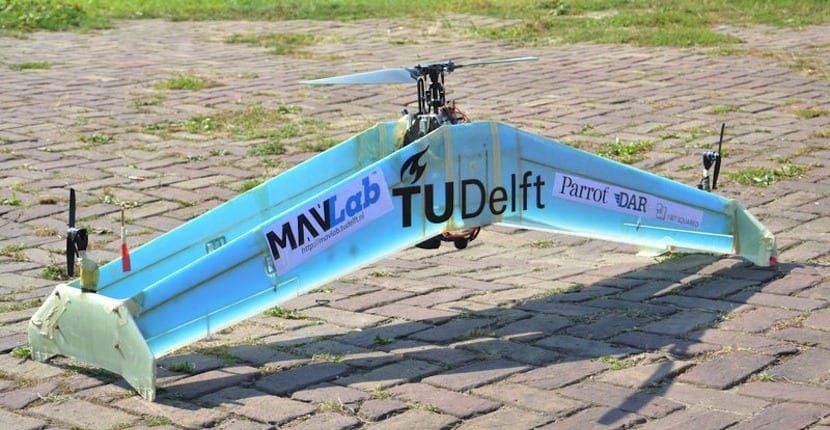
For a few years now, we have seen how manufacturers finally, when creating and designing a drone, basically bet on either a fixed-wing design or one created based on multirotors. To break this decision, today I want to present you the model created by a team of engineers from the Delf Technical University who have directly created a fixed-wing drone with multirotors so that it can take off vertically, this model has been baptized as DelfAcopter.
The idea that has led them towards this development seems to be very clear since they literally bet on take advantage of all that agility and the possibility of landing in very small spaces of drones equipped with several rotors with the load capacity and highest speed that can be reached by fixed-wing drones. As you can see in the video that is located just below these lines, the speed with which the DelfAcopter, after taking off vertically, changes its position in mid-flight is particularly striking.
A team of engineers shows us how to combine the advantages of a multi-rotor drone with those of a fixed-wing one.
In terms of technical characteristics, we find an aircraft that weighs about four kilograms and is capable of operating completely autonomously thanks to the fact that it incorporates a Parrot SLAMdunk. This same kit, in addition to allowing the drone to fly autonomously, offers obstacle avoidance functions. With all this system, the DelfAcopter is capable of flying at speeds of up to 107 kilometers per hour and, thanks to a 10.000 mAh battery this model has a autonomy of 60 minutes dragging from its maximum load.
As published from the Delf Technical University, the DelfAcopter will be exhibited and presented to the public at the Outback Medical Challenge, an event that this year will be held in Australia and in which this drone and all those who appear there will have to test the effectiveness of their systems in a test where they will have to transport blood plasma to a person located in an inaccessible area about 30 kilometers away. away.
It would be stated to have a drone that does not require a battery and can be manipulated with GSP / GRPS.